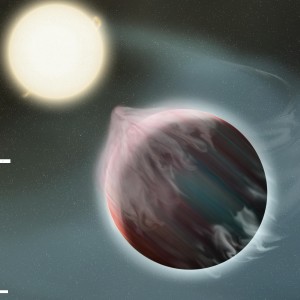Neat paper today from Francesca Valsecchi and colleagues at Northwestern University’s Center for Interdisciplinary Exploration and Research in Astrophysics. They looked at the final fates of gas giant planets that wander too close to their host stars, sometime called “hot Jupiters”.
This unexpected but apparently fairly common class of planet consists of massive planets made mostly of hydrogen and helium, like Jupiter, but, unlike Jupiter, these planets orbit tens or even hundreds of times closer to their host stars than the Earth orbits the Sun. Consequently, many of these hot Jupiters are fated to spiral closer and closer to their stars, eventually getting so close that their host stars’ gravity rips them apart, drawing their atmospheres into thin accretion disk around the star. This process is called “Roche lobe overflow” (RLO).
Once the progenitor hot Jupiter has lost its atmosphere, what’s left behind is probably the rocky/icy core at its center, and following up studies by other groups, Valsecchi and colleagues point out that RLO of hot Jupiters may help explain the puzzling presence of small rocky planets also found orbiting very close to their host stars. These little bodies may indeed be the skeletal remnants of unspeakable astrophysical violence.

